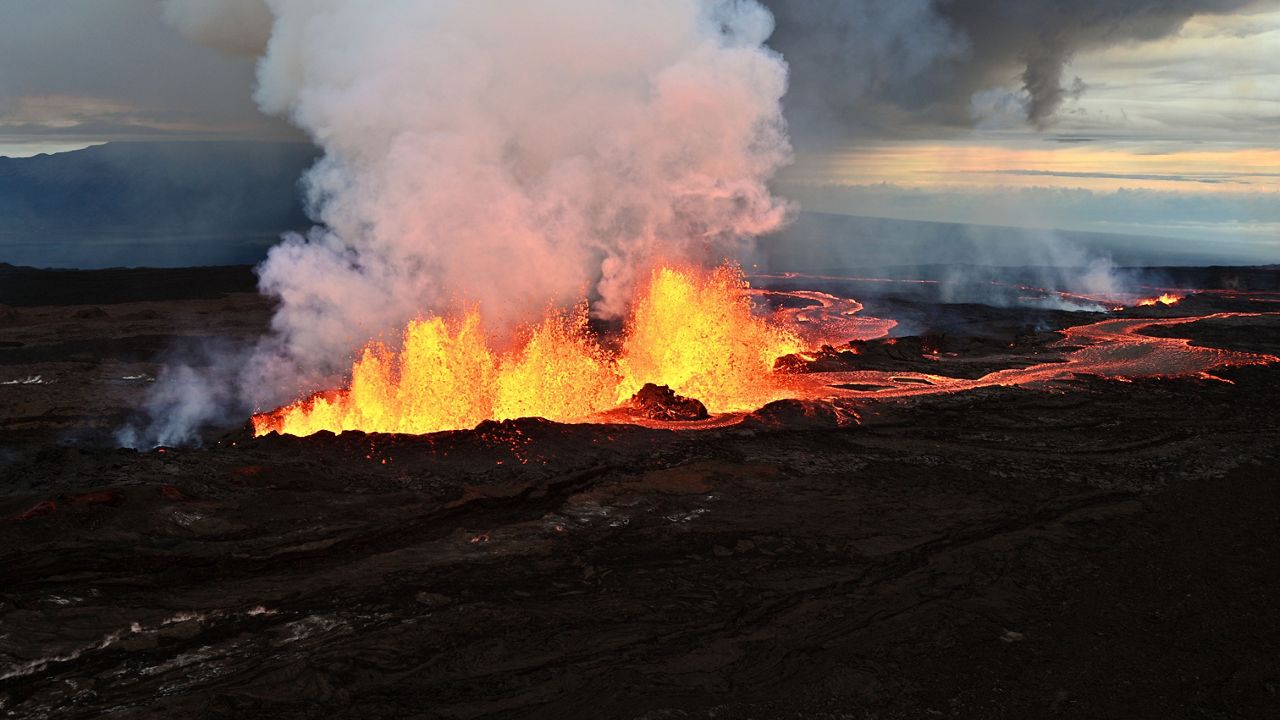Lava from the Mauna Loa eruption is predicted to reach Saddle Road in two days.
The eruption of Mauna Loa started late Sunday night, and it continues to spew lava from the Northeast Rift Zone, according to updates from the U.S. Geological Society.
A rift zone is an area below the summit where a volcano splits apart and magma easily makes its way to the surface. Once at the surface, lava flows downhill and follows the topography of the surrounding environment.
Currently, the Northeast Rift Zone has two active fissures feeding lava flows downslope. A fissure is a linear volcanic vent through which lava erupts. At least four fissures have been active since the start of the eruption.
Of the two active fissures, fissure 3 is the larger source of lava. The lava flow from fissure 3 is heading toward Saddle Road (also known as Daniel K. Inouye Hwy). The flow front is 3.6 miles from Saddle Road as of 7 a.m. Wednesday morning.
Over the last day, the flow has been advancing at a rate of 0.08 miles per hour. However, the lava flow is approaching a relatively flat area, which will slow down its advancement.
The USGS predicts it will take two days for lava flows to reach Saddle Road.
Fissure 4 is also active, with lava flows moving toward the northeast at a rate of 0.03 miles per hour. A small lobe is also moving to the east from fissure 4 at a slower rate than the main lobe.
Volcanic gas plumes are rising high into the air. Pele’s hair (thin glass fibers formed by volcanic gas) is falling in the Saddle Road area.
The USGS said their seismic monitors detect high rates of earthquakes in the area where the active fissures are erupting. This shows that magma is still being supplied, and activity is likely to continue as long as the monitors continue to detect earthquakes.
On Tuesday, the lava flow crossed the Mauna Loa Observatory Road, cutting off access and power to a laboratory that measures carbon dioxide.
Besides the Mauna Loa Observatory Road, Hawaii officials said at a news conference on Monday that there is no immediate threat to people or property on Hawaii Island.
The Hawaii Department of Transportation has urged the public not to pull over on the narrow shoulder of Saddle Road to view the lava.
The Hawaii Department of Health told people to stay away from the eruption because sulfur dioxide and other gasses make getting close to the lava flow very dangerous.
Michelle Broder Van Dyke covers the Hawaiian Islands for Spectrum News Hawaii. Email her ideas and feedback at michelle.brodervandyke@charter.com.





